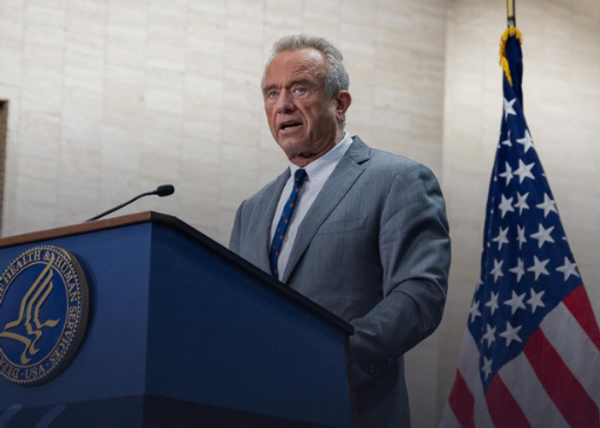
For healthcare specialists around western Appalachia, the recent dramatic fall in opioid overdose deaths has been nothing short of spectacular.
Last year saw a record decline of 30% in Kentucky to 1,410 people. In neighboring West Virginia, state health authorities estimate that there are at least 318 more people alive today due in large part to the availability and widespread use of naloxone or Narcan, a nasal spray that when administered in time, can reverse the effects of an opioid overdose.
Recent years have seen a spate of treatment and recovery programs help initiate a dramatic fall in the number of people dying from illicit drug overdoses. In Tennessee alone, authorities have attributed it to saving “at least 103,000 lives” between late 2017 and mid-2024.
“It’s working damn good. I knew six months ago that [the number of overdose deaths decreased] from the street,” says Chris Tucker, who works with the healthcare provider Pathways in north-eastern Kentucky.
“It’s a good upswing from what it was two years ago. You see success stories every day. If people are putting a foot forward, that’s a success.”
But now, the White House and Republican politicians are proposing cuts to programs and departments that could undo that hard-fought progress.
On 2 May, the Trump administration announced proposed cuts of $33.3bn to the health and human services department budget that would eliminate, among other programs, $56m used to train first responders and law enforcement officers how to administer Narcan.
In March, the White House cut more than $11bn in federal grants for addiction, mental health and infectious disease projects and programs. The same month, it announced plans to subsume the Substance Abuse and Mental Health Services Administration (SAMHSA) into the newly created Administration for a Healthy America (AHA). SAMHSA lost more than 100 staff in March and is set for further cuts.
House Republicans have been looking to cut funding for Medicaid, a program that provides communities with millions of dollars in opioid treatment and recovery funding, a move that Trump has recently warned against. Many of the proposed funding cuts are a part of the administration’s 2026 fiscal year budget proposal, which starts on 1 July.
“We still saw nearly 90,000 people die from overdoses last year. We owe it to them to do better and to save lives. The answer cannot be to cut these programs,” says Hanna Sharif-Kazemi of the Drug Policy Alliance.
Few other places in the US will see the effects of funding cuts felt more than in Appalachian communities. And few Appalachian communities have been hit as hard as Huntington, West Virginia, part of a region situated along the banks of the Ohio river that major drug manufacturers swamped with highly addictive painkillers such as Oxycontin in decades past.
Huntington’s Cabell county has the highest opioid overdose death rate in what for years has been the worst-hit state in the country. Nearby in Kentucky’s Boyd county, its 31 drug-related deaths in 2019 were more than three times the national level, and the second highest of any county in the Commonwealth.
Kyle Gibson, 37, grew up in neighboring Boyd county, Kentucky, in the late 1990s.
“The thing I am concerned about is access to treatment, because there’s a big pool of funding that puts peer supports in places where they otherwise wouldn’t be – hospitals, ERs, syringe exchanges all over the place,” says Gibson, the regional director at Path Behavioral Healthcare in Huntington, an organization providing mental and behavioral health treatment across five states.
“They are meeting people at their most vulnerable point in their lives, trying to give them direction. If that was cut, that would be detrimental.”
Now in recovery, Gibson’s journey into addiction was similar to many others in this area. He found the painkiller OxyContin in his grandmother’s house when he was in high school, which led him on the road to methamphetamines, Suboxone and other substance addictions.
“That was at a time when [doctors] were really pushing [highly addictive opioid painkillers]. Doctor shopping was a thing. For 11 years, it got real bad,” he says.
“I went to treatment just so my mom could sleep at night.”
When authorities clamped down on pill mills and pharmaceuticals more than a decade ago, in their place came heroin, then synthetic opioids fentanyl and more recently, carfentanyl.
Health experts say the pandemic contributed to a rise in loneliness in many small, rural communities, which in turn fueled a further wave of opioid overdose deaths.
Kentucky saw a 49% increase in overdose deaths from 2019 to 2020. Two years later, it still ranked among states with the highest per capita opioid overdose fatalities.
So for those who’ve worked hard to develop recovery and treatment efforts across Kentucky, the recent budget cuts are a major blow.
“Reducing this funding not only undermines life-saving work, it contradicts the goal of achieving greater government efficiency. Pulling support now would not only stall momentum but set us back years in the great investments we have made,” says Tara Hyde of People Advocating Recovery, a Louisville-based non-profit.
Experts say the benefits of reducing the number of people dying from overdoses include having more people in local workforces, reducing the load on already-struggling hospital emergency rooms and staff, and parents being alive, healthy and able to raise their children.
“This progress has created momentum helping to reduce stigma, because more people are showcasing the reality of recovery and speaking out to show that they are thriving in the workforce, going to school, or learning a trade,” says Hyde.
In Huntington, a city that’s lost close to half its residents since the 1950s, population decline has now slowed to a trickle, while household income levels are on the rise.
Still this region, which encompasses a corner of Ohio, Kentucky and West Virginia, locally known as “KYOVA” and dissected by the slow-moving Ohio river, the recent successes don’t mean that communities have entirely left addiction, and its associated ills – poverty, crime and mental health – behind.
Outside the Harmony House shelter on Huntington’s 4th Avenue, around a dozen people with their belongings – sleeping bags, clothes and bottles of water gathered up in shopping carts – bake in the early summer heat.
“We’re used to adapting and overcoming,” says Gibson, whose offices are a couple of blocks away, “one way or the other.”







